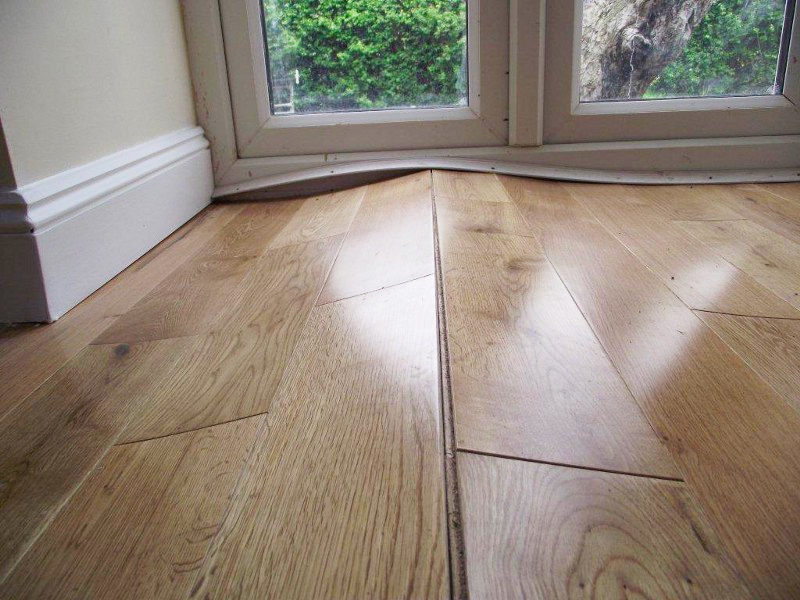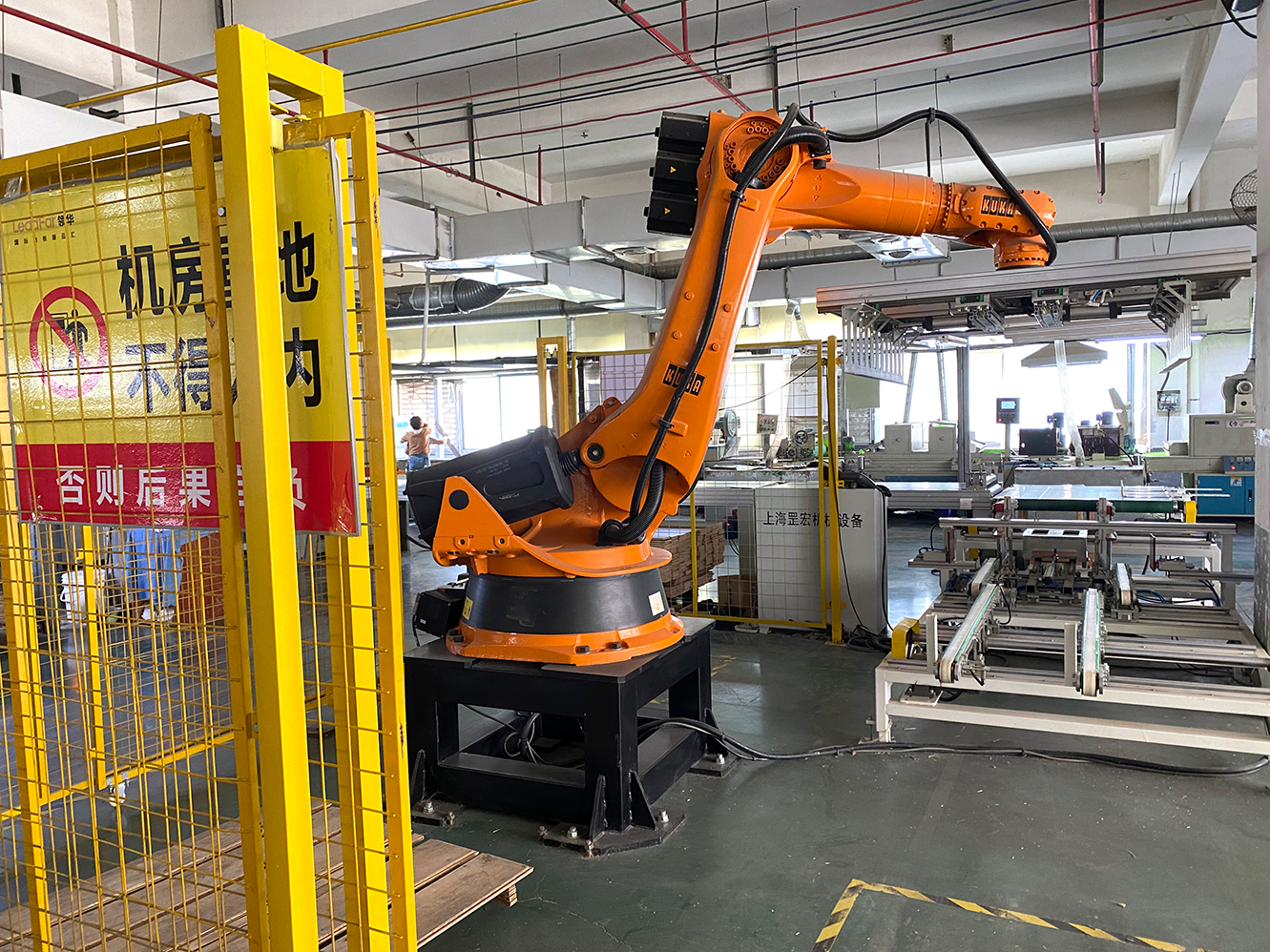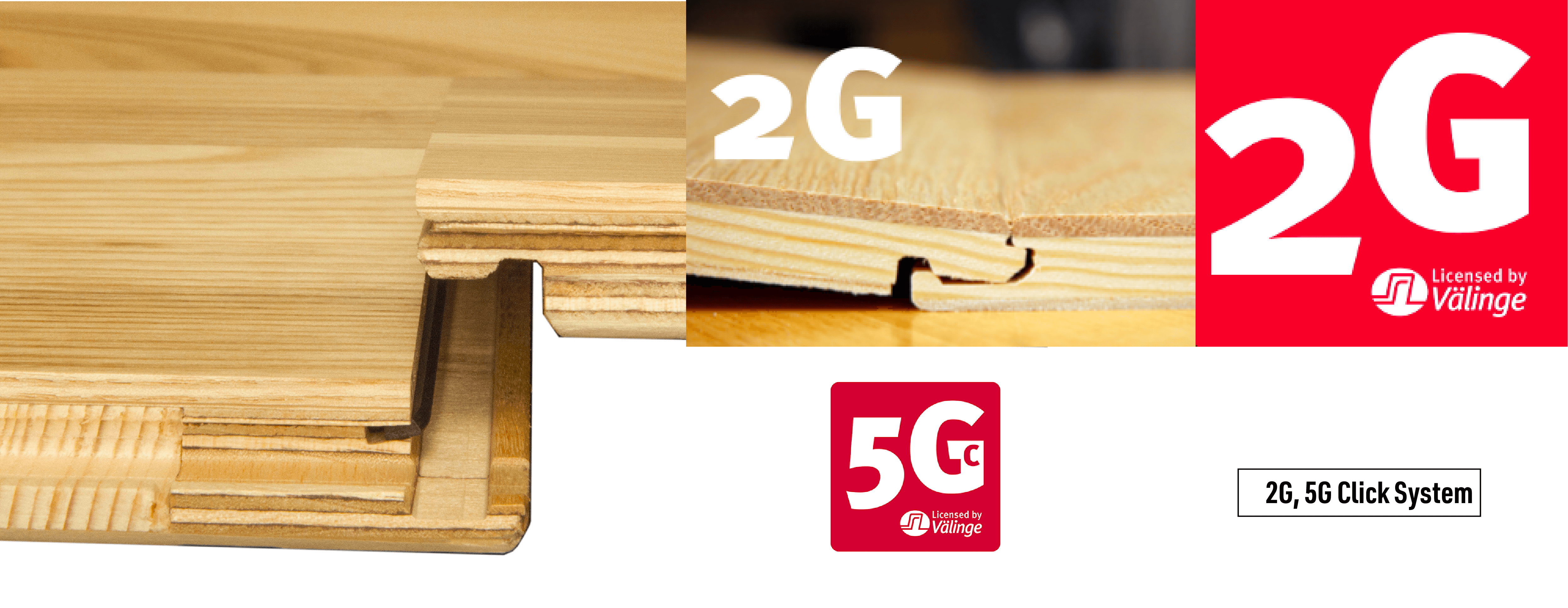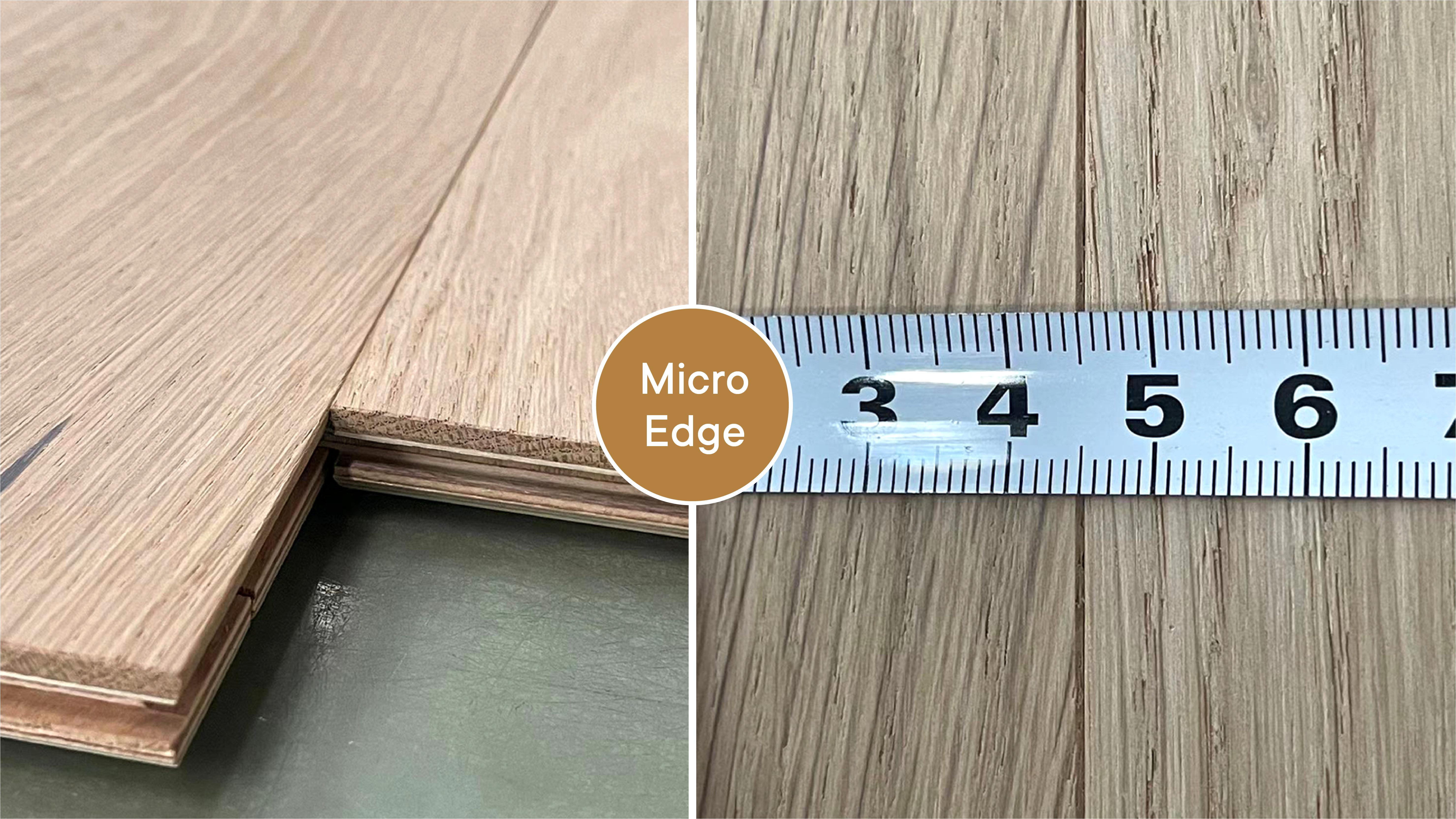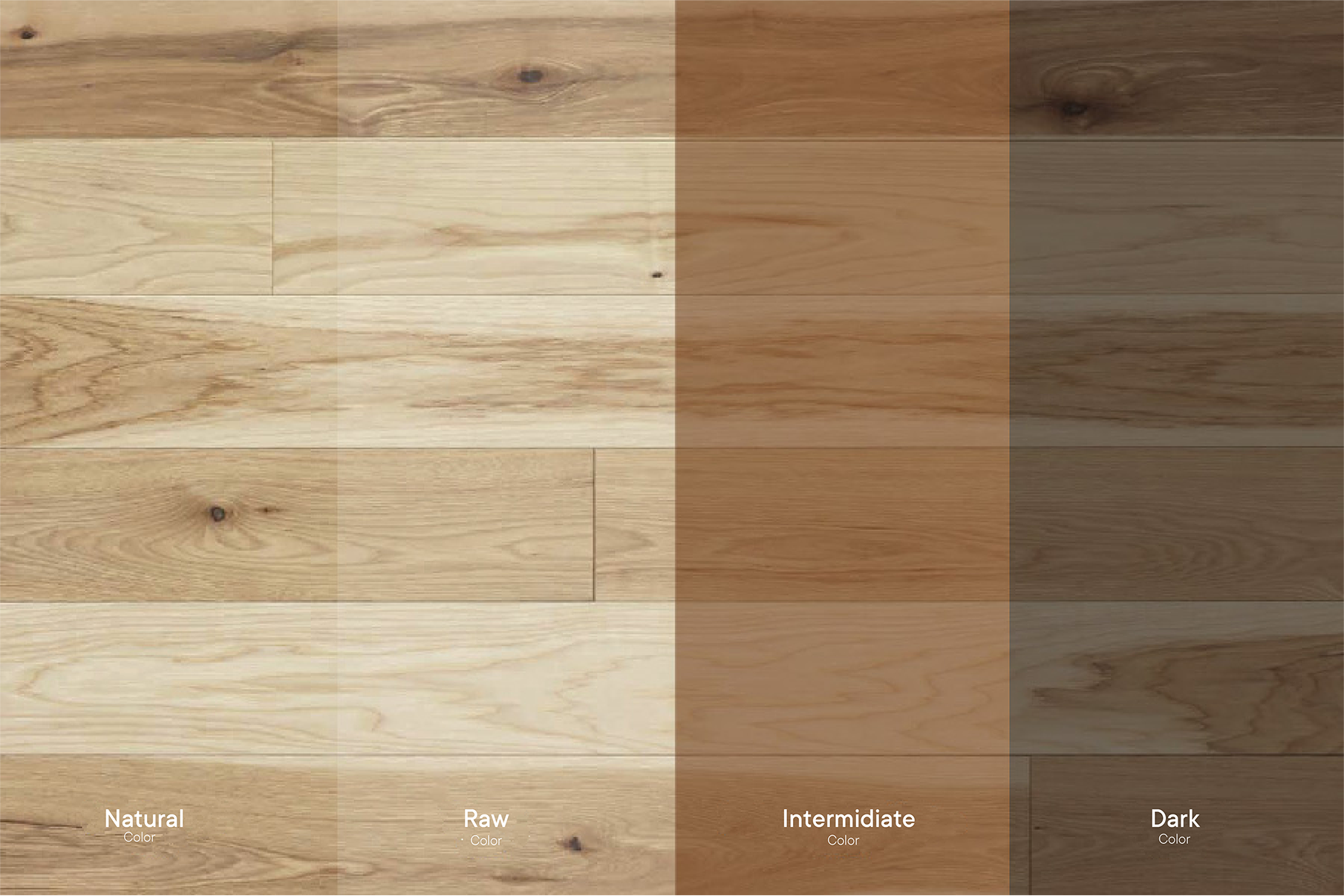
As you’re choosing a species of wood for your hardwood floors, there are great reasons to consider Hickory and Ash. Both hardwoods produce beautiful, stable and durable wood floors with lots of character and room for customization. While many homeowners may mistake one for the other, there are some key differences in Hickory vs. Ash flooring that are important to note as you select the wood on which your life at home will be lived.
The rugged beauty of Hickory
Hickory is an incredibly strong and handsome species of hardwood. The color in a Hickory floor can range from creamy white hues in the sapwood to dark, cocoa brown in the heartwood. Hickory offers incredibly varied and distinct grain patterns. Its big personality is attractive to some homeowners but a dealbreaker for others. Hickory can be a great choice for a broad range of interior designs, including everything from modern bungalows to rustic lake-side retreats.
 The natural appeal of Ash
The natural appeal of Ash
Ash is an amazingly dense and durable hardwood with unique elasticity that makes it ideal for installation in larger spaces. Ash features meandering grain patterns that range from fairly straight to gorgeous swirls. The hues in an Ash floor will typically run from cool blonde to soft white for a more neutral and natural palette, making it a highly popular option for contemporary design schemes.
 Distinguishing Hickory vs. Ash
Distinguishing Hickory vs. Ash
Hickory and Ash floors are sometimes confused for the other, as both species show a lot of personality in the grain. However, Hickory is significantly darker than Ash and has more prominent knots.
Which is stronger: Ash or Hickory?
With a Janka hardness rating of 1320, Ash is a very durable species of hardwood that can easily be installed in high-traffic areas. But with a hardness rating of 1820, Hickory is among the strongest hardwoods commonly used for flooring. It’s incredibly resistant to scratches, dings and dents. An additional consideration for either Ash or Hickory is to add a brushed texture which removes the softer grain while creating an older texture to the floor. This texture also helps to reduce the appearance of scratches or dents in the floors.
 Engineered floors made with Hickory and Ash
Engineered floors made with Hickory and Ash
Both Ash and Hickory make excellent engineered floors. Engineered floorboards use a special construction technique where multiple layers of backing material are glued to a top layer of hardwood. This multi-layered floorboard offers a more stable core that lets it perform better than solid wood planks in places with higher levels of moisture and humidity.
How easy is it to stain Hickory vs. Ash?
With fewer tannins in the wood, Ash is one of the easiest hardwoods to stain. However, because Ash is prized for its lighter, natural hues, it is often left natural. Staining Ash is quite easy and allows for a variety of colors as you are not competing against a darker or more varied background in the natural tone of the wood. Hickory also accepts stain quite well and is frequently finished with darker colors that accentuate its grain.
Keeping Hickory and Ash floors clean
Cleaning any hardwood floor is a fairly simple proposition.
- Sweeping and vacuuming can remove most dust and dirt.
- Mopping with a mild solution of water and white vinegar can help to cut through dirt and grime and leave a streak-free floor.
Because Ash floors are usually finished in natural or lighter colors, they may tend to hide dust and dirt more easily than darker Hickory floorboards.
 Texturing Hickory and Ash floors
Texturing Hickory and Ash floors
It’s easy to add texture to both Hickory and Ash floorboards. Texturing or distressing techniques can be used to give new floors the appearance of antique surfaces. Craftsmen can use wire brushes to gently wear away the softer grains in a floorboard, reproducing the effect of time and foot traffic over several generations. Hand-scraped boards give them the appearance of planks that were once prepared for installation by hand.
When it comes to texturing, the principal difference in Hickory vs. Ash is coloration. It may be easier to reproduce the look of an antique floor with the darker tones of Hickory. It’s one of the reasons Hickory hand-scraped hardwood flooring is such a popular option, for example.
 Comparing the cost of Hickory vs. Ash
Comparing the cost of Hickory vs. Ash
Ash tends to be a little more expensive than Hickory to purchase and install. In part, this may be because of availability. Ash trees are susceptible to damage from an invasive beetle species, making it harder at times to find wide timbers.
Exploring Hickory vs. Ash flooring at GolinkFloor Wide Plank Floors
At GolinkFloor, we offer extraordinary wide plank floors in Hickory and Ash, as well as many other hardwood and pine species. Your GolinkFloor wide plank specialist can help you explore all the pros and cons of Ash and Hickory hardwood flooring, as well as differences in Hickory vs. Maple, Ash vs. Birch and Hickory vs. Oak flooring. We’ll also walk you through all the possibilities for wood grade, color, texture, pattern and other choices to help you design a one-of-a-kind surface for your home. Whether you’re looking for living room flooring, dining room flooring or family room flooring, you can trust GolinkFloor to help you create a floor that will bring warmth, joy and beauty to your space for years to come.
 The natural appeal of Ash
The natural appeal of Ash Distinguishing Hickory vs. Ash
Distinguishing Hickory vs. Ash Engineered floors made with Hickory and Ash
Engineered floors made with Hickory and Ash
 Texturing Hickory and Ash floors
Texturing Hickory and Ash floors Comparing the cost of Hickory vs. Ash
Comparing the cost of Hickory vs. Ash
